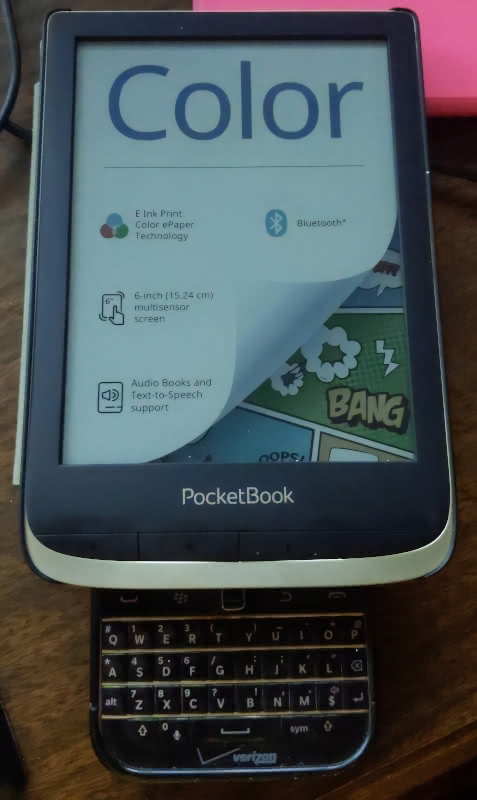Back in 2022, I bid farewell to BlackBerry 10, the now-defunct mobile operating system that I had used on my BlackBerry Classic through spring 2021 (the photo rescue came a bit later). Most of my nostalgia was related to the classic BlackBerry QWERTY keyboards. In that post, I expressed my hope that QWERTY keyboards on phones with free and open source and privacy-friendly operating systems would come to the fore. But is that all we need for the perfect phone? I think not, especially after seeing an article by Brad Linder of Liliputing on the China-exclusive Hisense A9 E Ink smartphone.
I am a fan of e-ink devices. I currently own a Kindle Paperwhite, PocketBook Color, and PocketBook InkPad Color, the latter two of which I plan to review at some point. Reading on e-ink is far more comfortable than reading on regular screens, and I am very interested in the concept of color e ink devices (I like the displays on the current PocketBook Color devices, although some reviewers had less positive takes).
I only recently learned that China has e ink phones, a concept that has not quite yet made it stateside. Mr. Linder describes the Hisense A9 (photos in the article):
The Hisense A9 is an Android smartphone with a Qualcomm Snapdragon 662 processor and a 6.1 inch, 1648 x 824 pixel black and white E Ink display. … When Hisense launched the A9 in China last year it was available with 128GB of storage and 4GB or 6GB of RAM. Now you can also order a model with 8GB of memory and 256GB of storage.
Brad Linder
The specs are obviously middling, but I do not demand much from my phone. The thing I do most often on my phone is read RSS feeds and articles from my Wallabag collection. That would be better on an e ink display than on my Google Pixel 3a XL (running LineageOS).
In theory, one could buy a Hisense A9 outside of China. Mr. Linder notes that, as of the writing of his article, the budget version retails for about $260 on AliExpress while the high memory model is about $360. However, there are notes of caution. Mr. Linder explained that the Hisense A9 has only limited support for cellular networks outside of China. Moreover, it runs Android 11 with Hisense’s own UI, and I doubt there are official builds of free and open source Android alternatives available for it.
(Not to mention I am not sure where this phone “phones home.”)
In addition to the issues I noted above, I add that an e ink display would resolve only one of my phone problems. One thing I do on my phone very seldomly is type. This is because I hate typing on touchscreens. My view on the touchscreen vs QWERTY keyboard issue is the same as it was when I was forced off my BlackBerry Classic in 2021 due to its increasingly faulty battery.

This got me to considering what the perfect phone would be. I offer my list of ideas below.
- The phone should have a full QWERTY keyboard. The old BlackBerry devices provide a good model.
- Ideally I would want the phone to have a color e-ink display, but regular e-ink would be acceptable.
- The phone should have free and open source operating system options and flexibility with long-term support. That is, I would not want it to be tied to stock Android for all but the highest level hackers and tinkerers. I inadvertently sparked a Hacker News debate last year about the meaning of “Android alternative.” While I too would like to see a fully usable Linux OS for a phone, I am fine with forks of the Android Open Source Project such as LineageOS, /e/ OS, and Graphene OS (among others), especially given the number of apps available in F-Droid. So long as the device provides some flexibility, I am open to a number of options.
- The phone should ideally have a replaceable battery or, if not pop-in-and-play, the battery should at least be accessible without normal users needing to take it to a repair shop.
- I know that beggars cannot be choosers, but I am only spending so much on a phone. If the Hisense A6 can go for $360, let us try to cap my project at $400. Is that possible? Maybe we can go up to $500 if the thing is genuinely repairable and promises real long-term support. I would be willing to begrudgingly sacrifice the color display (for now) to keep costs down.
A phone with a full QWERTY keyboard, color e ink display (or non-color, depending on price effects), and free and open source operating system options, and a replaceable battery. Surely I am not the only person who wants this. Let us make it happen.